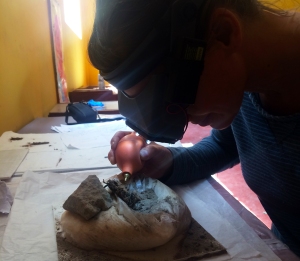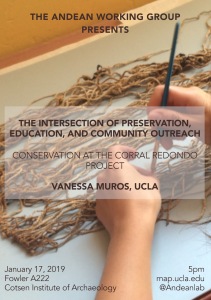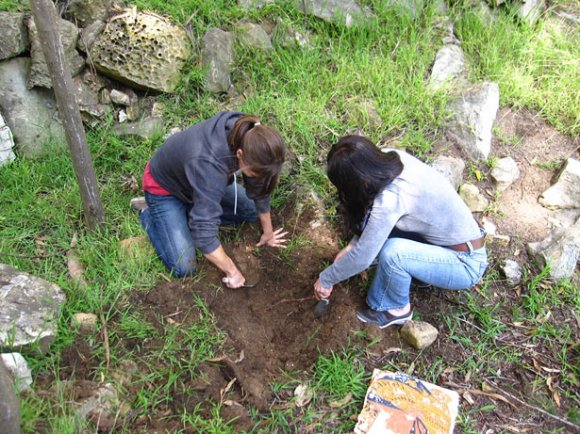Since the summer of 2017, I’ve been heading down to the SW Peloponnese in Greece to work at the Palace of Nestor Excavations directed by the University of Cinncinati. I was brought on to work on the metals finds discovered in the tomb of the “Griffin Warrior” and those artifacts are pretty spectacular. When people find out I work on archaeological excavations they always ask about finding or working on gold (after I get asked what is the coolest object I’ve ever conserved), and now I can say to them I have actually worked on/found on gold on site.

Photomicrograph showing the engraving of Hathor’s face on the back surface of a gold pendant excavated outside the area of the Palace of Nestor (image taken from the New York Times article on the excavation)







